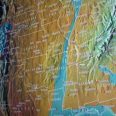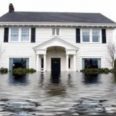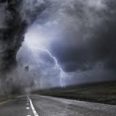| Online: | |
| Visits: | |
| Stories: |

| Story Views | |
| Now: | |
| Last Hour: | |
| Last 24 Hours: | |
| Total: | |
Protect Your Home and Family in an Emergency (Preparing for Earthquake, Fire or Terrorist Attack)
Protect Your Home and Family in an Emergency (Preparing for Earthquake, Fire or Terrorist Attack)
Emergency Preparedness
Our community can be exposed to a wide variety of disasters, both natural and man-made, such as earthquakes, fires, severe storms, power outages and acts of terrorism.
Imagine that you have no electricity, no gas, no water and no telephone service. Imagine that all the businesses are closed and you are without any kind of emergency services. What will you do until help arrives?
RELATED : Helpful Holistic Organic Tips for Survival Emergency Prepping
It is important to be prepared to take care of yourself and your family. Plan to be on your own for at LEAST the first 72 hours.
Many of us tell ourselves that some day we will put together our family’s disaster kit and develop a family plan. But somehow, that day never comes. We procrastinate, thinking it will never happen to me, or it will never happen here. The task may seem overwhelming or we just don’t want to think about something as unpleasant as a catastrophic earthquake hitting our city, so we don’t – even though we know that in a major disaster it might be several days before vital services are restored.
Although it is human to want to avoid unpleasant tasks, when we procrastinate anxiety and guilt seem nag at us. Being prepared doesn’t have to be overwhelming and once we actually begin the task our mood is lifted.
Complete these step-by-step checklists and you will be prepared. Integrating preparedness practices into our daily life can become routine, such as never letting the gas tank in our vehicles get below half a tank – if we ever need to evacuate there will always be gas in the car.
The following steps will help you prepare for any emergency:
Make a household/family plan.
Involve all key people in planning. Talk with your family about the potential disasters that can happen and why it’s necessary to prepare for them. Involve each member of your family in the planning process. By showing them simple steps that can increase their safety you can help reduce their anxiety about emergencies. Take into account the special needs of children, seniors or people with disabilities and your pets.
Designate an out-of-area contact person.
Select someone that is far enough away to not be affected by the same emergency. Provide this person with the names and contact information of the people you want to keep informed of your situation. Instruct family members to call this person and tell them where they are. Long distance phone service is often restored sooner than local service. Make sure each member knows who your family’s out-of-state contact is and instruct them to call this person and tell him/her where they are.
RELATED : Some Basic Steps to Prepare for a Terror Attack- Keeping You and Your Family Safe
Duplicate important documents and keep copies off-site, either in a safety deposit box or with someone you trust. Documents may include: passport, drivers license, social security card, wills, deeds, financial statements, insurance information and prescriptions.
Inventory valuables, in writing and with photographs or video. Keep copies of this information off-site with your other important documents.
Make sure everyone knows where to find your disaster supply kit and go-bags.
Have a flashlight and a pair of shoes under everyone’s bed in case there is an earthquake during the night. Use a plastic bag tied to the leg of the bed to keep these items from moving during an earthquake.
Plan where to meet after a disaster if your home becomes unsafe. Choose two places, one just outside your home and one outside your neighborhood in case you are told to evacuate.
Determine the best escape routes from your home. Try and identify two escape routes.
Locate the gas main and other utilities and make sure family members know when and how to turn them off.
RELATED : Real Life Perspective: How To Survive When Danger Is Right Outside Of Your Front Door
Practice your evacuation routes, Duck, Cover & Hold and Stop, Drop & Roll drills.
Teach each member of your family how to use a fire extinguisher.
Make your home safe.
During a disaster ordinary objects in your home can cause injury or damage. However there are simple steps you can take to make your home safer. Start by viewing each room with a “disaster eye” and identify potential hazards bookshelves that could tip over in an earthquake and block exits, heavy objects that could fall and cause injury, or reactive chemicals, such as bleach and ammonia, stored together under a kitchen sink. Install smoke detectors on each level of your home and change batteries every six months. Move mirrors and heavy pictures away from couches or places where people sit.
Clear hallways and exits for easy evacuation. Store heavy items on the lowest shelves. Keep ABC type fire extinguishers and know how and when to use them. Strap down your water heater and fit it with a flexible gas supply line. Store flammable or highly reactive chemicals securely and separate from each other. Secure pictures, wall hangings and heavy items such as bookcases and file cabinets. Know how and when to switch off your utilities. The ability to locate and operate utility shutoffs will increase safety and reduce property damage in a disaster situation.
RELATED : Preparing for a Disaster or Emergency
Natural Gas leaks can cause an explosive and flammable atmosphere inside a building. The main shutoff valve is next to the main gas meter, usually located on the exterior of your home or building. Once you turn off the gas it may take several days for it to be turned back on. NEVER ATTEMPT TO TURN THE GAS BACK ON. Let the Gas Company do it. If you smell gas, shut off the main valve and open all windows and doors. Only turn off the gas if you smell a leak. Another indicator of a leak is if the unmarked wheels on the gas meter are spinning. Never use candles or matches. Do not turn on electrical switches or appliances. To turn gas off, turn the lever 1/4 turn; when lever crosses the direction of the pipe (across the flow) the gas is off. Keep a crescent wrench or gas shut-off tool nearby to turn the lever.
Electricity can be deadly. Electrocution can result from direct contact with live wires or anything that has been energized by these wires. Know where your homes main electric switch is. It may be a pull handle or very large circuit breakers inside the panel box. Shut off electricity when: Arcing or burning occurs in electrical devices; you smell the distinct odor of burning insulation; the area around switches or plugs is blackened and/or hot to the touch; the complete loss of power is accompanied by the smell of burning material.
RELATED : Free Energy & Development Plans Electricity Power Generator
Water not only creates property damage, but it can also cause electrocution if electrical wires energize it. An inside water shutoff is usually located in the basement, garage, or alley. The inside water shutoff is located on a riser pipe and is usually a red or yellow wheel. In either case, to shut off the water, turn wheel clockwise until off. Shut off the water when there is a severe leak inside the building.
Put together a disaster supply kit and go bag.
Plan to have supplies for yourself and family for at least THREE TO FIVE DAYS following a disaster. After a major disaster the usual services we take for granted, such as running water, refrigeration, and telephones, may be unavailable. Experts recommend that you should be prepared to be self-sufficient for at least three days. Your basic emergency kit should include:
- Water one gallon per person per day. In a disaster, water supplies may be cut off or contaminated. Store enough water for everyone in your family to last for at least 3 days. More is better. Seal water containers tightly in a clean food-grade plastic container, label them with a date, and store in a cool, dark place. Rotate water supplies every six months. Keep a small bottle of unscented liquid bleach to purify water. If you have concerns about your water safety do one of the following – Boil water for at least five minutes, let cool, then drink or use to prepare food. Add 8 drops of unscented liquid bleach to each gallon of water. Shake or stir, then let stand 30 minutes. A slight chlorine taste and smell is normal. If you run out of stored drinking water, strain & treat water from your water heater. To strain, pour it through a clean cloth or layers of paper towels. Treat, following the directions above.
RELATED : Turn Undrinkable Water Into Pure, Crystal-Clear Distilled Water With a Home-Built Solar still.
- Food ready to eat or requiring minimal water. When a disaster occurs, you might not have access to food, water and electricity for days, or even weeks.Store enough emergency food to provide for your family for at least three days. Food Tips: Avoid foods that require a lot of water, refrigeration or cooking. Choose foods your family will eat. Don’t forget a manual can opener and utensils. Recommended Foods Include: Ready-to-eat canned meats, fruits and vegetables; canned juices, milk and soup; high-energy foods, such as peanut butter, jelly, crackers, granola bars and trail mix; comfort foods, such as hard candy, sweetened cereals, candy bars and cookies. Dried foods (select carefully as some have a high salt content). Instant meals that don’t require cooking or water.
RELATED : The Majority Of You Will Die In A Food Supply Collapse
- First Aid kit & instructions. In any emergency, you or a family member may be cut, burned or suffer other injuries. Keep the following basic first aid supplies so you are prepared to help when someone is hurt – Two pairs of disposable gloves; sterile dressings to stop bleeding; cleansing agent/soap and antibiotic towelettes to disinfect; antibiotic ointment to prevent infection; burn ointment; adhesive bandages in a variety of sizes; eye wash solution to flush the eyes or as general decontaminant; scissors; over-the-counter medicines such as aspirin or other pain reliever, laxative, anti-diarrhea medication; prescription medications you take every day such as insulin, heart medicine, or asthma inhaler; prescribed medical supplies such as glucose monitoring equipment or blood pressure monitors; essential medications.
RELATED : First-aid kit – Never Be Without These Things
- Also Flashlight; large plastic bags for waste and sanitation; battery operated radio (tuned to 820 AM); batteries; cash in small denominations; copies of important documents and phone numbers; sturdy shoes; heavy gloves; warm clothes; a hat and rain gear; a local map; extra prescription eye glasses; hearing aid or other vital personal items; plastic sheeting, duct tape and utility knife for covering broken windows; blanket or sleeping bag; extra keys to your house and vehicle.(source)
SOURCE : http://www.prepperfortress.com/protect-your-home-and-family-in-an-emergency-preparing-for-earthquake-fire-or-terrorist-attack/
Other useful resources:
Survive Attack to Our Power Grid System (Weapon That Can Instantly End Modern Life in America)
Survival MD (Best Post Collapse First Aid Survival Guide Ever)
Backyard Innovator (A Self Sustaining Source Of Fresh Meat,Vegetables And Clean Drinking Water)
Blackout USA (EMP survival and preparedness)
Conquering the coming collapse (Financial advice and preparedness )
Liberty Generator (Build and make your own energy source)
Backyard Liberty (Easy and cheap DIY Aquaponic system to grow your organic and living food bank)
Bullet Proof Home (A Prepper’s Guide in Safeguarding a Home )
Family Self Defense (Best Self Defense Strategies For You And Your Family)
Survive Any Crisis (Best Items To Hoard For A Long Term Crisis)
Survive The End Days (Biggest Cover Up Of Our President)
Drought USA(Discover The Amazing Device That Turns Air Into Water)
You may also like …












